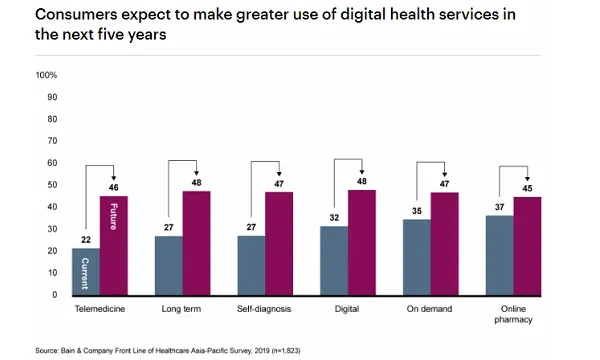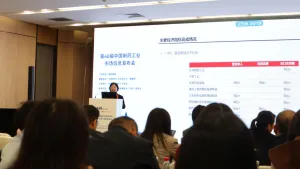
Telemedicine platform activity surges across Asia Pacific
It has been receiving government support as a way to control the spread of the pandemic.
The pandemic has spurred a rise in the number of patients using telemedicine platforms and applications in the Asia Pacific, according to a brief from Bain & Company. This sped up the adoption of digital health tools.
In China, the number of new users on healthcare services platform Ping An Good Doctor surged nearly ninefold MoM in January 2020. Online healthcare community Ding Xiang Yuan and telemedicine platform Chunyu Doctor also showed a sharp increase in online users and visits.
This was also observed amongst digital health platforms across the region. Singapore-based telemedicine platform MyDoc recorded a 60% rise in the number of daily active users in February, and more than doubled again in March.
“When the Covid-19 outbreak began in China and spread throughout Asia, going for a regular doctor’s visit became risky or impossible. Stuck at home, many of those who needed to see a physician for other conditions turned to Internet-based options for diagnosis and treatment,” the brief stated.
Further, Bain’s research revealed that nearly 50% of patients in Asia Pacific expect to use digital health tools in the next five years. In addition, over nine in 10 or 91% also said they would use digital health services if the costs were covered by an employer or insurance provider.
“What we are seeing is a step change in the acceptance of telemedicine,” said MyDoc co-founder and CEO Snehal Patel. “Having tracked users in this space for over seven years, this sort of rapid adoption is unprecedented.”
Telemedicine has also been receiving further government support since the pandemic, as they viewed it as a tool for containing the spread of the virus. For instance, Australia has extended Medicare coverage for telemedicine and South Korea eased restrictions on telemedicine to treat COVID-19 patients remotely.
In addition, Japan launched a free government-backed remote health service using digital health tools, and Indonesia’s Ministry of Health partnered with ride-hailing giant Gojek and telemedicine provider Halodoc for quick Covid-19 diagnostics in remote areas.



















 Advertise
Advertise






